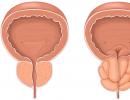Yoga Kurunta: flying?
They say that a true yogi does not need any adaptations for his studies. He is ready to meditate and perform asanas even on damp ground. And most urban yoga lovers are accustomed to practicing ancient Indian practices alone with a rug. However, for a modern sophisticated person, diversity and choice are extremely important. Perhaps, responding to these needs, there are so many schools, currents and branches in yoga. One of them is Yoga Kurunta. We note right away that this kind of yoga is not a modern find. Even in the most ancient treatise, which was called "Yoga Kurunta", techniques for performing asanas in suspension on vines were described. In modern yoga studios, vines have been practically replaced by ropes, but the meaning of the practice has not changed from this.
"Kurunti" means "puppet" in translation. Indeed, in Yoga Kurunta, we are invited to simultaneously turn into a puppet and her puppeteer with the help of strong ropes attached to the wall.
Generally speaking, you can practice Kurunta Yoga even on your own at home. To do this, you need a strong rope 3-5 cm thick and 5 m long. Tie the ends of the rope together to form a ring. Next, slip the double rope through two rods of the window lattice, the width between which should be 60-80 cm. Instead of the window lattice, you can use hooks or rings fixed in the wall. They should be set 60-90 cm above your head so that you can reach them with your arms outstretched, standing on tiptoes. As a result, you should end up with something that looks like a swing without a seat.
Let's see what asanas and how you can do it with a rope.

1. (Pose of the cobra) - there are several options for performing this asana with the help of ropes. First, you can do it by standing with your back to the wall, grasping the rope behind your back with both hands, and bending back and hanging from it. Secondly, as in the photo above, you can go further and lie on the central part of the rope, expanding it with the help of a blanket folded several times, like on a swing seat, with your hips, feet rest against the wall, grab onto the rope behind your back and bend back.

031yogafrica.org
2.Urdhva Mukha Pashimottanasana(Pose stretching the legs, face up) - performed by grabbing the ropes with straight arms, hanging on them, throwing straight legs behind and placing the feet together on the wall.

centroanandayoga.com.ar
3. (Inverted Plank Pose) - Backward bend, which is performed facing the wall, hanging with straight arms on the rope.

4.Ushtrasana(Camel Pose) - this is also a backward bend, but it is performed on your knees, standing facing the wall, pressing your hips tightly against it and grabbing the rope with your hands, or, as in the case of Cobra Pose, you need to hang on the rope, like on a swing , lower back, place your knees on the wall and bend back, placing your palms on your heels.
5. (Birch Pose) - this is a balance on the shoulders, which is performed against the wall, grasping the rope with your hands;
Halasana(Plow Pose) Karnapidasana, Supta Konasana, Parsva Halasana, Eka Pada Sarvangasana, Parshvaika Pada Sarvangasana- they are distinguished from the classical variants of performing kurunta in Yoga only by holding the rope with the hands.

Also, the ropes in Yoga Kurunta have proven to be an excellent aid in performing most inverted asanas and balances on the head, arms, shoulders, one leg, etc.

shantaram.com.ua
As you can see, Yogi Kurunta has a lot in common with hammocks. It allows us to soar above the ground and thereby give us new unusual sensations of ourselves, from a different angle to look at the capabilities of our body. With the help of the rope, all classical asanas will play in a new way.

In many asanas, the rope helps to hold them with less effort than on the ground in the classical performance. Thanks to this, Yoga Kurunta is great for beginners and elderly people. Advanced yogis with the help of a rope can improve and diversify their practices.
Also, we can confidently talk about the good therapeutic effect of Yoga Kurunta. It is great for women who are weakened after childbirth. Thanks to the mobility of the rope, the spine stretches gently and the back naturally gains flexibility.
In a word, although "kurunti" is translated as a puppet, in fact, Yoga Kurunta helps to learn how to control your body in positions that are quite unusual for it, i.e. to be a "puppeteer". Look for yourself with yoga, and perhaps Kurunta will help you with this.






